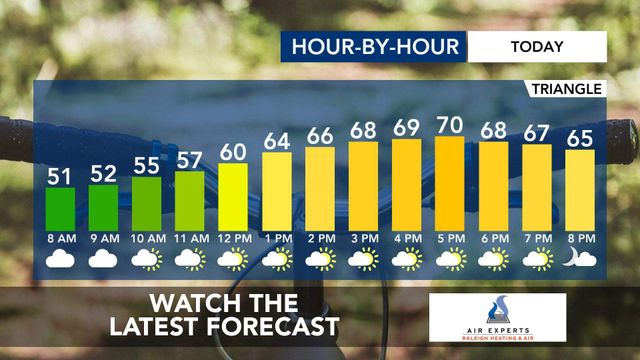Apple Takes a Humble Approach to Launching Its Newest Device
SAN FRANCISCO — When Apple released the Apple Watch in 2015, it was business as usual for a company whose iPhone updates had become cultural touchstones. Before the watch went on sale, Apple gave early versions of it to celebrities like Beyoncé, featured it in fashion publications like Vogue and streamed a splashy event on the internet trumpeting its features.
But as Apple prepares to sell its next generation of wearable computing, the Vision Pro augmented reality device, it is marching far more quietly into the consumer marketplace.
The company said in a news release this month that sales of the device would begin Friday. No big product event was scheduled, although Apple has created a catchy commercial about the device and offered individual demonstrations of it to tech reviewers. And in a departure for the secretive company, the Vision Pro has been tested with more developers than past Apple products were to see what they like and don’t like about it.
The toning down of marketing tactics speaks to the challenges facing Apple, a company that has grown so large over the years that new product lines that could one day be worth billions are still a sliver of iPhone sales, which topped $200 billion last year.
Apple’s low-key approach to the Vision Pro also speaks to the challenges associated with selling a device that could still be years away from appealing to mainstream consumers. In addition to explaining what the Vision Pro can do — as it does with every new device — Apple must overcome its high price of $3,500, as well as muted interest in augmented reality gadgets that blend the digital and physical worlds. Another challenge: The three-dimensional experience provided by the device can really be understood only through demonstrations.
Apple’s solution is to take it slow and seed interest with developers who may build apps that work with the Vision Pro. The company is expected to pitch the device to more mainstream customers after it has lowered the price and improved the technology.
Analysts expect Apple to sell about 400,000 units of the Vision Pro this year. By contrast, the company sold an estimated 12 million Apple Watches in 2015, analysts said.
“Apple knows that this product is not ready for the masses,” said Gene Munster, managing partner at Deepwater Asset Management, a tech investment and research firm. “For them to put a big splash out would be off the mark.”
Apple declined to comment.
The Vision Pro has been nearly a decade in the making and cost billions of dollars to develop. The device, which looks like ski goggles, uses cameras and sensors to track people’s eyes and hand movements as they interact on the headset’s display with 3D digital objects like apps and computer screens. It can also record 3D video and play films on screens that look as big as those in a movie theater.
“It’s the first Apple product you look through and not at,” Tim Cook, Apple’s CEO, said in June during the product’s introduction.
But augmented reality devices have struggled to catch on with consumers. Last year, the tech industry sold 8.1 million augmented reality headsets, an 8.3% decrease from the previous year, according to IDC, a market research firm. Since jumping into the market in 2014, Meta, the parent company of Facebook, has been selling Oculus and Quest headsets for video games and virtual meetings. Sony, Microsoft and Varjo, a Finnish company, also have augmented reality devices.
Apple has tried to set its device apart from competitors that have described their products as gateways to the metaverse. Rather than use that term, which Neal Stephenson coined in the 1992 novel “Snow Crash,” Apple has called its augmented reality experience “spatial computing.”
In its headset guidelines, Apple asked developers not to refer to the apps that they create as virtual reality or augmented reality products but as spatial computing apps.
“They’re maintaining complete control,” said Grant Anderson, the CEO of Mirrorscape, the maker of an augmented reality app for tabletop games.
Since the June unveiling, Apple has courted developers it hopes will build apps for the device. It created test labs around the world where developers could try the product.
In August, Cristian Díaz, an engineer at Monstarlab, went to a Vision Pro lab in Munich. After stepping through a secret door marked with an Apple logo, he joined several other developers who were each fitted with a headset and given six hours to test their apps and write code in the system.
Díaz said Apple’s engineers had asked the developers for feedback on the device, including on how the software and development tools worked. They took notes. When Díaz returned for a second lab experience in London in September, he said, it was clear that Apple had made improvements based on the feedback.
Among the changes, Apple made it possible for its engineers to watch what developers were doing inside the headsets by connecting to them with Apple’s wireless communication tool, AirPlay, Díaz said. That allowed the engineers to assist developers in solving problems as they worked on their apps.
“We were like animals in a lab,” said Díaz, who called the Vision Pro “a great experience.”
The approach was something of a departure for Apple. Under its co-founder Steve Jobs, the company largely avoided doing focus groups for its products because he believed that Apple’s job was to figure out what customers wanted before they knew it.
Cook has been more open to seeking feedback, said Phillip Shoemaker, who worked at Apple for seven years, leading its App Store. Under both Jobs and Cook, Apple tested its iPad and Watch products with select developers in Cupertino, California. But with the Vision Pro, the company took an unreleased product to developers overseas for the first time.
“Of all products to do that with, a headset makes sense because a headset is fickle,” said Shoemaker, the executive director of Identity.com, an identity verification nonprofit. “They don’t fit everyone well.”
In addition to courting developers, Apple has worked with entertainment companies to outfit the Vision Pro with TV shows, movies, music and sports. Disney has made it possible to watch films from a theater in its streaming app on the device, and Alicia Keys recorded an intimate performance in an immersive, 3D video.
Content experiences will be key to broadening the device’s appeal, said Carolina Milanesi, a technology analyst with Creative Strategies. Because headsets close people off from the world, she said, Apple will have to give people reasons to spend time in one.
To raise consumer interest, Apple has been running a commercial on national television. The spot shows clips from famous films of people donning headsets, including Luke Skywalker of “Star Wars” and Doc Brown of “Back to the Future.” It culminates with a woman pulling on a Vision Pro.
The ad is a reminder of the original iPhone commercial that showed TV and movie clips of people answering the phone, like Lucille Ball in “I Love Lucy.”
Apple has been running a Vision Pro ad during NFL games, according to iSpot.tv, which measures ad spending. Apple spent $6.4 million on the spot during the second week of January. By comparison, it spent $9.3 million on an iPhone ad in the first week after the release of the iPhone 15 last September.
“Is it a product that will be ubiquitous? No,” Milanesi said. “It’s going to be a product that takes time.”
This article originally appeared in The New York Times.









